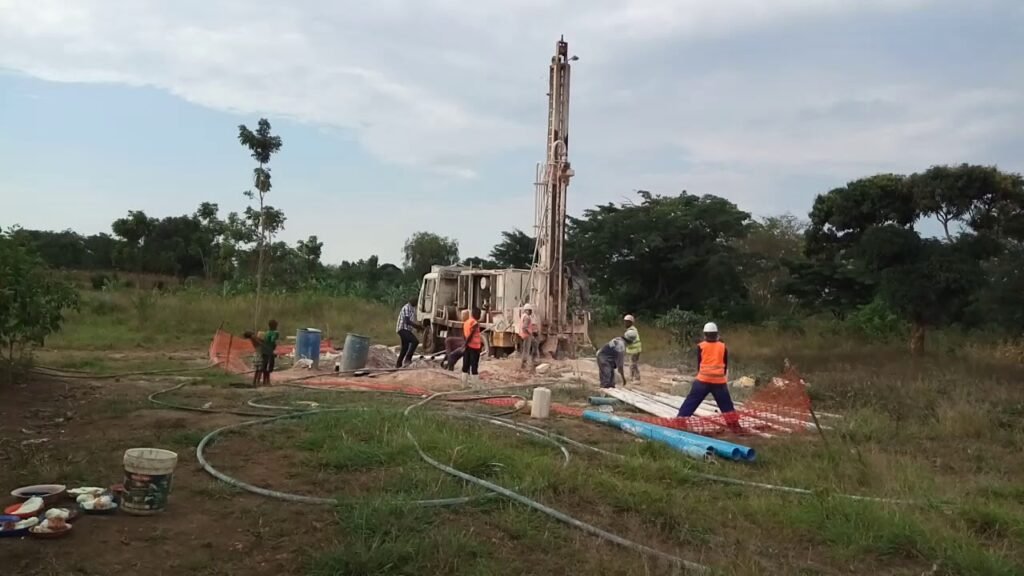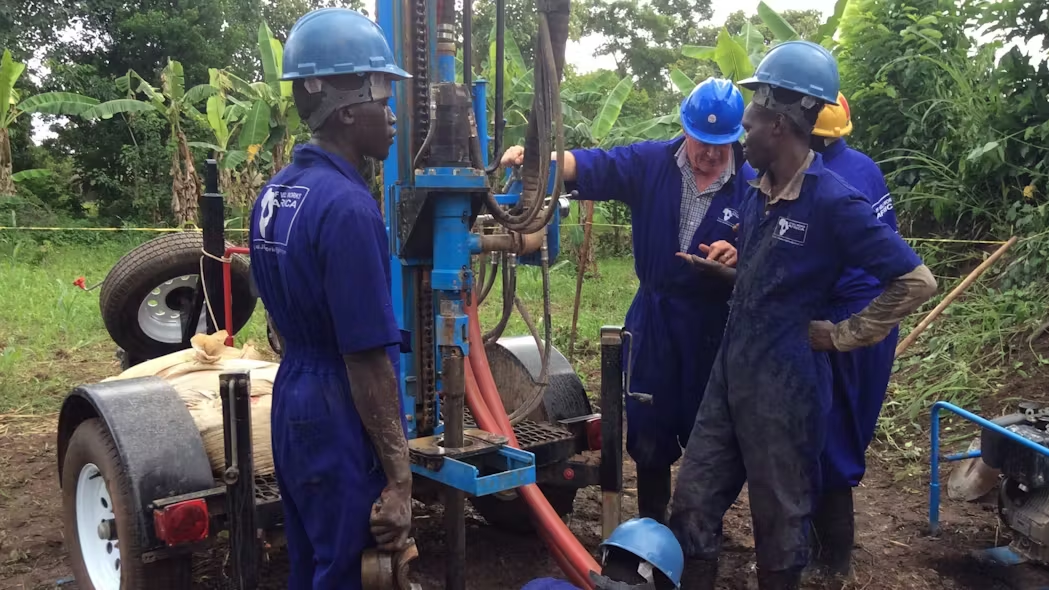Introduction to Shallow Wells in Uganda
In Uganda especially the rural regions where water and sanitation is still a major challenges, The development of Shallow Wells Technology provides a source of safe drinking water for the people in villages. As a result, this guide seeks to bring out an easy to understand explanations of how the shallow wells work, their construction as well as their significance in the day to day lives of the people of Uganda. This article has something for everyone; the local community member, the NGO worker, or the general person who wants to know how these efficient technologies work.
What Are Shallow Wells?
Shallow wells are groundwater wells that are well sources closer to the surface of the earth; depths do not exceed 50 feet; or 15m. In contrast to deeper boreholes which call for specialized equipments in its construction and implementation, the shallow wells can always be done by hand by hiring people plus basic equipments like hoes and shovels making it cheaper and easily accessible to the most affected communities.
The Importance of Shallow Wells in Uganda
What is the big fuss about shallow wells? Water contamination also causes waterborne diseases since most surface water sources such as rivers and lakes are contaminated in many parts of Uganda especially the rural areas. Through use of these wells, the people are able to access clean and more reliable source of drinking water from the ground wells. At the same time, the construction and maintenance of the site are not difficult, which makes it possible to use this option for organizing remote communities efficiently and for a long time.

How Shallow Wells Differ from Deep Wells
The only main difference between the two is that of depth as concerned with shallow wells and deep ones. They can be very deep; some of them will be over 100 feet deep and involve sophisticated drilling mechanisms and technologies hence costlier to drill. Moreover, shallow wells can be hand dug, so they are more available to the communities that do not possess large amount of money.
Advantages of Shallow Wells:
- Lower cost
- Easier construction
- Faster to build
- An important property as it fits places with high water tables.
Disadvantages of Shallow Wells:
- Limited water yield
- More susceptible to contamination
- May reduce during the dry seasons
Site Selection for Shallow Wells
It is therefore imperative that the right site is selected so as to ensure a successful construction of a shallow well. To sum up, it is necessary for the well to be constructed in the zone with rather high water table and no contaminants. Superstitions such as digging a few test holes or use of divining rods are some of the ways people find the best location around them.
Considerations for Site Selection:
- Discharge from potential contaminating activities such as; latrines, waste pits
- Slope (five wells should be placed at the lowest possible grounds to accommodate all the water required).
- The type of soil since the looser will give easier way during digging but many require some degree of stabilization.
Materials Needed for Shallow Well Construction
Here’s a quick rundown of the basic materials you’ll need to construct a shallow well:
- Shovels and digging tools
- Ary well linings for instance concrete or PVC pipes.
- Well cover
- Manual operation such as use of handle pump or the bucket system.
- Filtering medium which is composed of gravel and sand
- Rope for lifting equipment
These are common materials and are cheap to acquire and this is why shallow well types are so popular in Uganda.
Step-by-Step Guide to Constructing a Shallow Well
Site Preparation
After pointing the right site, one should remove all vegetation and other forms of undergrowth from the site in question. Choose the ground to dig the well with much care and make sure that the chosen place is very flat where the well has to be made.
Digging the Well
The fun part is however over and now comes the hustle; digging! This generally may take from few days to a week depending on the type of soil present in the area. This hole should be large enough to enable digging and also the placing of the well linings during construction. Pay special attention to be sure that you do not make your hole slanted.
Installing the Well Linings
Select concrete or PVC linings once the well has reached a considerable depth to avoid wall caving in. The linings also has the function of defending the water against contaminants. These should be placed snugly and should be fixed at the bottom of the well.
Creating the Wellhead
Wellhead is the upper-most end of the well and plays a critical role of preventing dirt and other contaminant from coming in contact with the well. There should be a wellhead cover or cap, and the most simple means of extracting water are a hand pump or … a rope and bucket.
Water Filtration and Purification in Shallow Wells
Despite the fact that water from shallow wells is comparatively purer to surface water, it still requires to be treated so as to make it congenial to drinking. The well bottom has hire basic filtration capability with the help of the layer of gravel and sand. However, it is recommended that boiling of the water be done or even treatment with chlorine before the water is consumed.
Maintenance of Shallow Wells
Shallow wells are prone to frequent breakdown and therefore requires constant servicing in order to keep it functional. This involves washing the wellhead, inspecting on the pump system and making sure that the well is free from any intruders. If a shallow well is properly constructed and well maintained, one can be sure that it can last for many years, and serve generations of people with safe water.
Common Maintenance Tasks:
- It means that one has to ensure that the well cover is cleaned at regular intervals.
- Check for crack along the linings
- Test water quality periodically
- Make sure that the hand pump or even the bucket system is functional well

Challenges of Shallow Wells in Uganda
That said, shallow wells are not devoid of challenges and the following are the setbacks associated with the construction of shallow wells. Some of them may dry up especially during dry seasons and they are easily get contaminated due to their shallow nature if proper aseptic procedures are not observed.
Technology Innovations Improving Shallow Wells
Recent technological advancement has seen a breakthrough in the construction and management of the shallow wells. For instance hand augers have made it easier to dig wells in areas with hard surfaced soils. Solar pumps are also being widely used in the society as this is now a renewable source of energy when it comes to pumping water.
Community Involvement in Well Projects
It is always crucial to have people of the community involved in the project specifically to shallow well project. This creates a sense of ownership and also guarantees that the residents of the area are conversant with well maintenance thereby eliminating cases of neglect.
Environmental Impact of Shallow Wells
Generally, the sub-surface water extraction methods especially shallow wells poses limited risk to the immediate environment. Nonetheless, it has been realized that extraction of high amounts of water or wells that are not well maintained can cause either depletion of water sources or pollute the water.
Cost Considerations for Shallow Wells in Uganda
Shallow wells are an effective method of acquiring water in rural areas for it is cheaper as compared to other methods. The cost depends on the place of work and the material used, cost of labor included the cost also differ. Depending on the depth the shallow wells are cheaper than other deeper wells and might range from $500 to $2,000.
Conclusion
Shallow wells provide hope and a source of cleaner water supply for many rural Ugandan communities that prior to the intervention made by Well source, water sources were limited and questionable. If constructed, and maintained properly these wells can continue to provide water to these communities for many years; which in the long-run translates into improved health and quality life. This guide is intended to provide some basic information to anyone considering how to build a shallow well in Uganda or how to support a project.
FAQs
1. How many inches should a shallow well be?
Usually in Uganda, the Shallow Wells vary from 10ft to 50ft deep in connection with the water table.
2. How often should shallow wells be maintained?
It should be done frequently particularly every few months in order to keep the well clean and functional.
3. Is is possible to use shallow well during dry seasons or in dry periods?
Yes but at some point of time especially during dry seasons especially if not constructed at areas with high water table its yield may low.
4. How much does it approximate to build a shallow well in Uganda?
The cost normally falls in a range between one hundred and fifty to two thousand dollars depending on the depth and materials to be used.
5. How long does a well last?
A shallow well can endure up to twenty years, or even longer, with the right maintenance.

